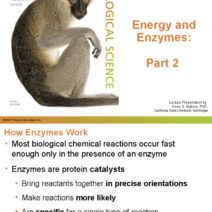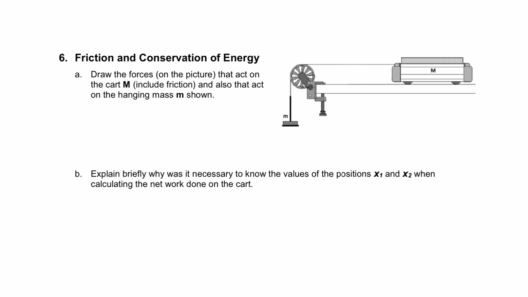Energy is a fundamental currency within the biological world, and like a savvy banker storing wealth for future investments, living organisms meticulously conserve energy for later use through intricate biochemical pathways. At the heart of this fascinating process are oxidation-reduction (redox) reactions—transformative exchanges of electrons that fuel life’s myriad functions. This discourse explores how energy is conserved for later use in oxidation reactions, revealing the body’s remarkable energy banking system that allows organisms to thrive in diverse environments.
To comprehend how energy is conserved, we must first appreciate the essence of oxidation reactions. These reactions occur when one molecule loses electrons—undergoing oxidation—while another gains electrons, leading to a reduction. This duality is akin to a seesaw; as one side elevates, the other descends. Just as the act of balancing requires precision, so too does cellular energy management. The energy harvested from redox reactions is primarily stored in the form of adenosine triphosphate (ATP), a molecule often heralded as the energy currency of the cell.
Think of ATP as a well-structured vault that safeguards energy deposits. When energy is liberated during cellular respiration—specifically through the catabolism of glucose—it’s meticulously transformed into ATP. This task is akin to converting raw materials into cash. Through the glycolytic pathway, glucose undergoes fermentation or complete oxidation, facilitating the release of high-energy electrons. These electrons are then handed off to carriers like NAD+ and FAD, which are similarly transformed into NADH and FADH2. This mobilization of electron carriers is essential, furnishing the energy needed to drive ATP synthesis.
Once synthesized, ATP functions as a rechargeable battery, ready to discharge energy whenever needed. In the real world, energy banks such as Tesla Powerwall store electricity generated during peak sun hours to be utilized later, showcasing the practicality of energy storage. In a similar vein, when ATP is hydrolyzed to ADP (adenosine diphosphate) and inorganic phosphate, energy is released, powering cellular mechanisms from muscle contraction to biosynthesis. Life is thus a constant cycle of energy deposits and withdrawals, an elegant interplay of conservation and utilization.
Beyond simple ATP formation, the body ingeniously employs various storage forms to optimize energy conservation. Glycogen, the polysaccharide composed of glucose units, serves as a potent energy reservoir in animals. Formed primarily in the liver and skeletal muscles, glycogen can swiftly convert back to glucose when ATP levels dip, showcasing an advanced form of energy stockpiling. This process requires careful hormonal regulation, with insulin facilitating glucose uptake and glycogen synthesis after feasts, while glucagon prompts glycogenolysis—breaking down glycogen into glucose during famines.
While glycogen serves as an immediate energy reserve, triglycerides offer a more substantial store of energy, although they are metabolized more slowly. These fats, stored in adipose tissue, are catabolized during periods of fasting or prolonged exercise, similarly illuminating the depth of energy conservation. During lipolysis, triglycerides are broken down into glycerol and free fatty acids, which can then enter metabolic pathways for ATP production. This level of energy conservation mirrors the impact of sustainable practices in modern society—paving the way for resilient ecosystems that can weather periods of resource scarcity.
The oxidative phosphorylation pathway epitomizes how the body maximizes energy conservation by exploiting the electron transport chain (ETC). In this scenario, NADH and FADH2 donate their electrons to the ETC embedded within the inner mitochondrial membrane. This cascade of redox reactions generates a proton gradient—think of it as accumulating water behind a dam; energy is stored and only released through the openings of turbines that drive ATP synthesis via ATP synthase. This ingenious system of energy generation reflects the precision of nature in harnessing and conserving energy rather than letting it dissipate as heat or waste.
Heat, a by-product of metabolic processes, highlights the dual role of energy transformations in biological systems. While some energy escapes as heat—akin to a failed investment—many organisms have evolved adaptations to mitigate energy loss. For example, brown adipose tissue in mammals specializes in non-shivering thermogenesis, utilizing the uncoupling protein UCP1 to generate heat rather than ATP. In this case, energy conservation takes on an intriguing twist, as the organism shifts from generating usable energy to safeguarding body temperature. This illustrates the multifaceted approaches to energy management, highlighting the resilience embedded in nature.
Moreover, enzymes serve as vital catalysts within these energy conservation pathways, enhancing metabolic efficiency. Each enzyme operates like a finely tuned instrument within a complex orchestra, catalyzing reactions with remarkable precision. For instance, enzymes involved in the Krebs cycle facilitate the efficient extraction of electrons from metabolic substrates. As these energy-transducing mechanisms occur, the orchestra of life plays on, producing a symphony of energy conservation.
In conclusion, energy conservation in biological systems through oxidation reactions reflects the sophistication of evolution. Much like a masterful financier, life has crafted elaborate systems to store energy when in surplus and wisely withdraw it during shortages. Through ATP, glycogen, triglycerides, and intricate pathways like the electron transport chain, organisms demonstrate their ability to harness and conserve energy, ensuring survival and adaptation in an ever-changing environment. As we grapple with the challenges of climate change, understanding the mechanisms of energy conservation may inspire more sustainable practices in our energy-hungry human societies, echoing the timeless wisdom of nature in managing its resources.








